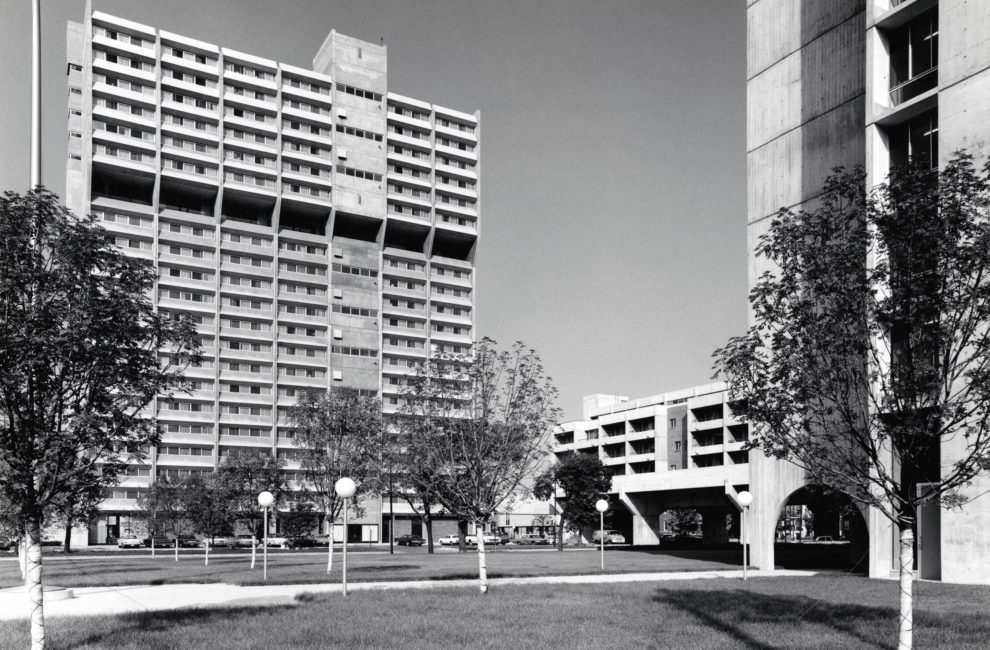Backtrack: Evans Woollen’s Mass Ave

The striking exposed-concrete design of Barton Tower was trendy when it was first built. Photo Courtesy Indiana Historical Society
The 500 block of Massachusetts Avenue now has all the trappings of modern urban life: sleek apartment buildings, a bougie taco joint, an escape room. Architect Evans Woollen couldn’t have seen that coming when he stood on the balcony of Barton Tower with a resident of the new public-housing project in the late 1960s. Down on the street level, the building was surrounded by green space for the senior citizens living there to enjoy. All of that leisure acreage is gone now, and no doubt many wish the old building itself would go, too. The raw-concrete look has never been lovable.
But if detractors now could look past the dingy facade, they might be able to appreciate Barton Tower’s architectural pedigree—something in short supply in Indy. Woollen, who would become the most distinguished architect of Hoosier public spaces, designed Barton 13 years after returning from Yale with his degree. He had brought home Modernist ideas, regarded around town as something special, but for admirers, this was a double-edged sword—when the leading Modernists of the world experimented with raw concrete, so did Woollen. The style was called Brutalism, and hardly anyone found it nice to look at.
That’s not the only reason Woollen chose concrete for Barton Tower—it was cheap, and the public-housing budget was tight. Woollen took a cue from the great French architect Le Corbusier, who had designed a government-subsidized building in the same style. It’s called Unité d’Habitation, and it’s iconic today, and the bright colors he splashed on the walls of recessed balconies are still there. Woollen did the same thing with a section of Barton Tower that once bridged East Street. It’s gone now, along with that significant bit of architectural DNA.
“He was willing to stick his neck out whenever the opportunity came to try,” says architect Larry O’Conner.
Woollen amassed awards along with the respect of the architecture community—partly for the courage of his convictions to make Indy a better place through architecture and urban planning. “He was willing to stick his neck out whenever the opportunity came to try,” says architect Larry O’Conner, who worked on Barton Tower and became a lifelong partner in Woollen’s firm, which operated here for 56 years.
Shortly after Barton opened, public housing around the world was coming down due to conditions of squalor. The city never had to light a stick of dynamite at Barton Tower. But the new development crowding Barton on all sides diminishes Woollen’s design, in O’Conner’s opinion. Visually, it signals a lack of respect for the building. “Almost wishing the tower wasn’t there,” O’Conner says. It’s the kind of thing that wouldn’t have happened on Woollen’s watch.





